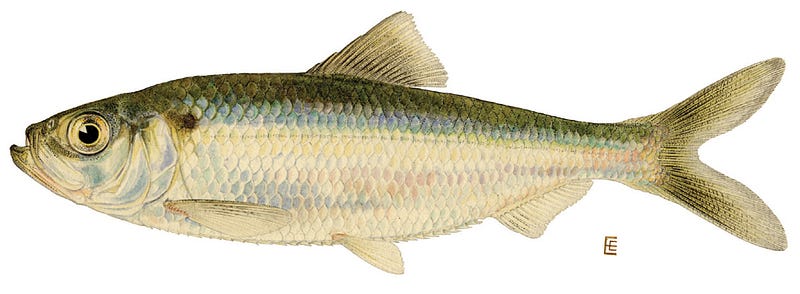Conservationists began to campaign for dam removal, a costly endeavor with little available public financing and even less public concern. Some fish ladders and lifts by-passing dams were constructed; in some cases volunteers gathered with buckets to literally carry the fish around the barricades to give some few access to up-river spawning ground. To give you a measure of the extent of the problem, in the watershed of the Penobscot River, scientists and monitors began to count fish at the mouth, and the numbers were diminishing exponentially. At one point along the route, in 2012, the count was just 43 fish passing.
The dams served no useful purpose anymore, and so began a movement for their removal, not exclusive to Maine or New England, but also in the northwest where the same phenomenon had caused comparable decline for the Pacific Salmon run. Through the efforts of local conservationists, several state non-profits, and some legislative funding, two major dams along the Penobscot watershed were removed entirely, and in 2016, at that same counting point from 2012, 1,803,000 fish were counted in passage — 43 to 1,803,000! — how does one even calculate the percentage of increase and return on investment? — an astonishing outcome in just four years, with predictable optimism for the increasing return of the historical alewife population, its ongoing viability and its measurable contribution to the community way of life.
Sylvia Earle, the indefatigable oceanographer and ocean advocate, argues for a network of global “hope spots,” typically pristine and remote areas now being more and more protected by national and international designations, treaties, and other protections. I would argue that the Penobscot Alewife Preservation Area is another telling example of a powerful place for hope, not just as a desirable outcome, but as a real success comparable in its significance as realized action on behalf of the survivability of a local species achieved by the determination and direct action of marine conservationists: boots in the legislative hallways, boots on the ground, boots in the water.
Take heart in this example. It is a tangible victory for change. Ignore the noise of the politicians and policy wonks and defeatists and deniers. Support your local conservation organizations and initiatives. And if there are comparable local issues left unaddressed in your neighborhood, be it by any ocean, launch your own campaign. That is where the work lies; that is where the need is; that is where we transcend hope; that is what we are meant to do as citizens of the ocean.
- - -
 “Alewives Revival on a River in Maine” was originally broadcast as an audio episode on World Ocean Radio. It is part of the Earth Optimism Series, 24 posts that will profile conservation actions and innovations to reduce our impacts on the planet. The Earth Optimism Series is brought to you by the World Ocean Observatory in partnership with the Smithsonian Institution’s Ocean Portal, to raise awareness of the Earth Optimism Summit during Earth Day weekend, April 21st through 23rd, 2017 in Washington DC and around the world. Read more solutions and success stories here and share your own ideas at earthoptimism.si.edu.
“Alewives Revival on a River in Maine” was originally broadcast as an audio episode on World Ocean Radio. It is part of the Earth Optimism Series, 24 posts that will profile conservation actions and innovations to reduce our impacts on the planet. The Earth Optimism Series is brought to you by the World Ocean Observatory in partnership with the Smithsonian Institution’s Ocean Portal, to raise awareness of the Earth Optimism Summit during Earth Day weekend, April 21st through 23rd, 2017 in Washington DC and around the world. Read more solutions and success stories here and share your own ideas at earthoptimism.si.edu.



